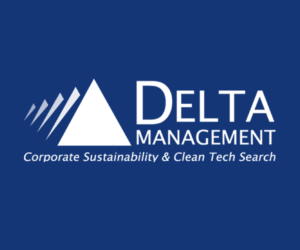Building Choices: It’s Time to Require Energy and Carbon Performance Disclosure
Canada’s building sector lacks standardized energy and carbon performance disclosure, limiting informed decision-making. Philippe Bernier, EVP Strategy & Growth at JLL Canada, discusses how adopting mandatory reporting and public labeling could reduce emissions, cut costs, and enhance policy-making.
[This article focuses on Canada’s commercial and institutional buildings, though the principles also apply to the country’s 16 million residential dwellings.]
In Canada, we can easily evaluate the energy efficiency of cars and appliances before buying. Yet for real estate – often our largest investment – we’re left in the dark. This difference highlights a critical gap in Canada’s approach to energy conservation and carbon reduction in buildings. As we confront environmental challenges, fluctuating energy costs, and rising electricity demand, Canada needs a clear, consistent, and mandatory system for disclosing building energy and carbon performance.
The Need for Transparency
Canadians should be able to evaluate a commercial property’s energy and carbon performance as easily as they do when buying an appliance. This transparency is crucial for individual decisions and our collective efforts to improve building environmental performance.
To address this gap, we need:
- Standardized and easy access to utility consumption data
- Mandatory energy and carbon performance disclosure to tenants, purchasers, and lenders for all commercial buildings during sale or lease
- Common public labeling for large commercial and institutional buildings, showing whole-building annual energy and carbon performance, benchmarked against peers
These measures would provide essential data and feedback, enabling improvements and informed choices across the real estate value chain.
Current Barriers and Market Failures
Canada’s nearly 500,000 commercial and institutional buildings face challenges in implementing energy and carbon disclosure due to feedback-related market failures:
- Fragmentation: A complex regulatory environment spans federal, provincial, and municipal levels, complicating alignment on utility data sharing
- Lack of standardization: Inconsistent requirements for utility data sharing hinder scalable solutions
- Data privacy concerns: Balancing transparency with privacy adds further complexity

As a result, Canadians, lenders, and governments are operating with limited visibility regarding buildings, which account for approximately 20% of Canada’s total end-use energy consumption, 13% of its GHG emissions, and tens of billions of dollars in annual utilities paid by owners and occupiers.
The Value of Energy Data Transparency
Implementing transparent energy and carbon disclosure for commercial buildings would yield multiple benefits:
- Cost savings: Owners, armed with insights and driven by competition, will make smarter investments, implement low-cost efficiency measures, and collaborate with tenants on shared efficiency goals
- Grid relief: Reducing consumption, approximately three times cheaper than increasing utility supply, is crucial as electrification and data centres escalate demand
- Evidence-based policy: Enhanced data quality empowers policymakers to develop more effective regulations, standards, and incentives for improved building performance
Unlocking Financial Capital for Retrofits
Global lenders struggle to assess building risks due to insufficient energy and carbon performance data. The European Central Bank notes that current asset values often don’t reflect the costs of improving building performance or mitigating future climate risks. In response, the International Valuation Standards requires ESG considerations in valuations from January 2025, affecting Canada.
Canadians and our real estate industry need utility data transparency. Common standards would allow:
- Purchasers/Investors to make informed choices
- Appraisers to incorporate energy and carbon costs into valuations
- Lenders to price loans based on building performance
- Lenders to improve risk assessment and strategic planning across their loan portfolios
These changes would create clearer price signals, drive conservation investments, and enhance the quality and resilience of Canadian buildings.
“Global lenders struggle to assess building risks due to insufficient energy and carbon performance data”
-Philippe Bernier
Success Stories and the Path Forward
Transparent building performance disclosure has a proven track record globally:
- UK: Large public buildings display an A to F energy efficiency rating in their lobbies for over 15 years
- EU: Similar approaches are widespread
- Australia: NABERS (National Australian Built Environment Rating System) provides 1- to 6-star ratings for various building types for the past 25 years, complemented by mandatory disclosure for large commercial office spaces at time of sale or lease
In North America, similar initiatives have been implemented:
- Canadian municipalities (e.g., Calgary, Winnipeg, Montreal, Vancouver) and provinces (e.g., Ontario, Quebec) have adopted comparable initiatives
- Numerous US cities and states have similar programs
- Canada Green Building Council’s Disclosure Challenge demonstrated strong industry support for such measures, calling for harmonized government regulation

Despite this, Canadian governments continue to operate in silos with limited coordination.
The following actions could yield considerable progress:
- Amend provincial energy acts and regulations to ensure easy access to building energy data while protecting confidentiality
- Use the federal Energy Efficiency Act to foster collaboration with utilities to share data through ENERGY STAR Portfolio Manager
- Consider adopting Quebec’s Bill 41 approach, which mandates energy (and potentially carbon) labels for all buildings
The Atlantic Canada Energy Data Roadmap (QUEST, 2018) offers valuable insights on policy options and challenges, emphasizing provincially driven solutions.
Conclusion
Canadians deserve to know their buildings’ environmental performance, and the solution is within reach: transparent markets through standardized, nationwide building energy-carbon disclosure. Successful models exist both domestically and internationally. By implementing consistent policies, we can overcome this obstacle, enable informed choices, reduce consumption, and deliver cost savings.
Federal and provincial governments need to adopt a coordinated approach to address the challenges described, establish a national standard for building energy and carbon disclosure, and enact regulatory reforms to enhance transparency in this area.
These actions will foster more competitive, efficient, and sustainable buildings for all Canadians.














